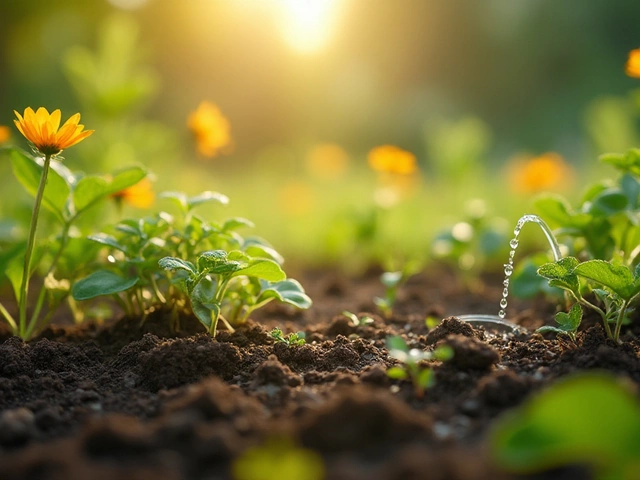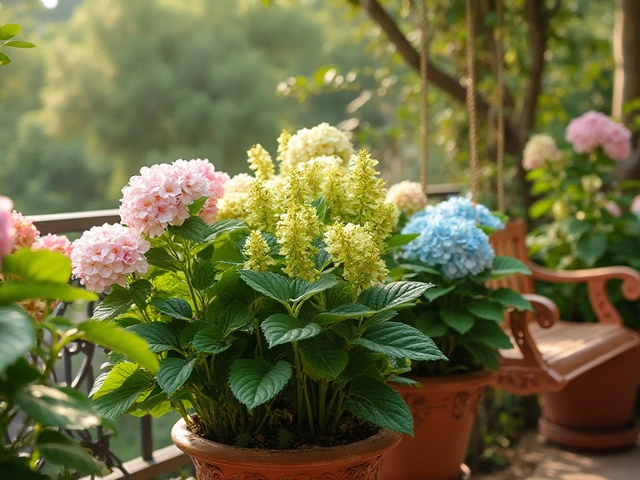Marigold Lucky Flower: Simple Guide to Planting and Caring
Ever wonder why the bright orange marigold is called the "lucky flower" in India? It’s more than just a pretty bloom – it’s a symbol of good luck, health, and protection. If you want that splash of sunshine and a dash of positivity in your garden, this guide shows exactly how to grow marigolds the easy way.
Why Marigold Is Considered Lucky
Marigolds have been used in festivals, weddings, and religious rites for centuries. Their bold color is believed to chase away negative energy and attract prosperity. In many Indian homes, a pot of marigold near the entrance is a simple way to welcome good vibes.
Planting Marigold: Step‑by‑Step
1. Choose the right spot. Marigolds love full sun, so pick a place that gets at least 6‑8 hours of light daily. They tolerate light shade, but expect fewer flowers.
2. Soil matters. Well‑draining soil works best. If your garden soil is heavy, mix in sand or compost to improve texture. A pH between 6.0 and 7.0 keeps the plants happy.
3. sow seeds or seedlings. Direct sowing is simple – sprinkle seeds ¼ inch deep, space them 6‑12 inches apart. For faster results, start seedlings in trays and transplant when they have a few true leaves.
4. Water wisely. Keep the soil moist until germination, then water when the top inch feels dry. Over‑watering can cause root rot, so avoid soggy conditions.
5. Feed occasionally. A light dose of balanced fertilizer every month boosts growth. Too much nitrogen can make the plant leafy but reduce flowers, so stick to the recommended amount.
6. Pinch for bushier plants. When seedlings reach about 6 inches tall, pinch the tops. This encourages side shoots and more blossoms.
With these steps, you’ll see a burst of orange, yellow, or white flowers in just 8‑10 weeks.
Marigolds also act as natural pest repellents. Plant them near vegetables to deter nematodes, aphids, and beetles. Their scent confuses many insects, making them a low‑cost companion plant for a healthier garden.
When the season ends, deadhead wilted blooms regularly. Removing spent flowers pushes the plant to produce new ones and extends the flowering period. In cooler regions, treat marigolds as annuals – they’ll finish their cycle before winter, but you can reseed each spring.
If you’re short on space, try growing marigolds in containers or hanging baskets. Just make sure the pot has drainage holes and use a light potting mix. A balcony or terrace garden can still enjoy the lucky vibes.
Remember, marigolds are hardy, but extreme heat can stress them. During scorching days, give them a light mist and mulch around the base to retain soil moisture.
Whether you’re planting for festivals, a kitchen garden, or just love the bright color, marigolds are a low‑maintenance choice that brings both beauty and a touch of tradition. Start with a few seeds, follow the simple care steps, and let the lucky flower work its magic in your backyard.
Which Is the Luckiest Flower in India? Discover Spiritual and Cultural Wonders
Explore India’s most cherished lucky flower, uncover ancient traditions, surprising science, and practical ways to invite luck and positivity with flowers.
About
Flower Gardening
Latest Posts


Alternative Pest Control: Natural Solutions for Safe Gardening
By Alden Thorne Jul 15, 2025

Evaluating the Benefits and Costs of Drip Irrigation Kits
By Alden Thorne Feb 2, 2025

Avoiding Mistakes: Where Not to Plant Hydrangeas on Your Balcony
By Alden Thorne Nov 29, 2024

